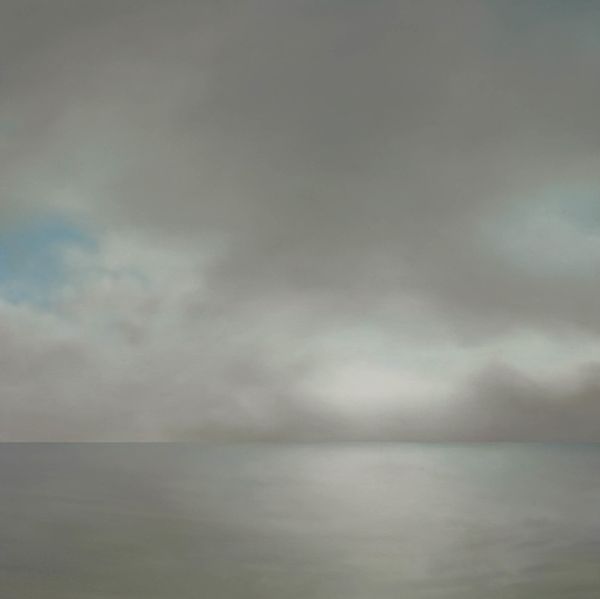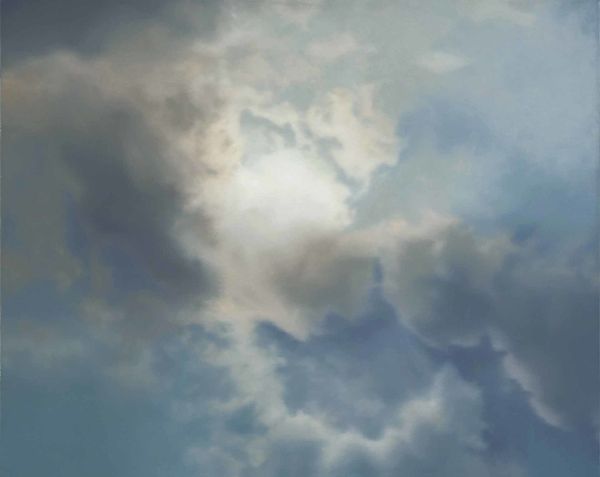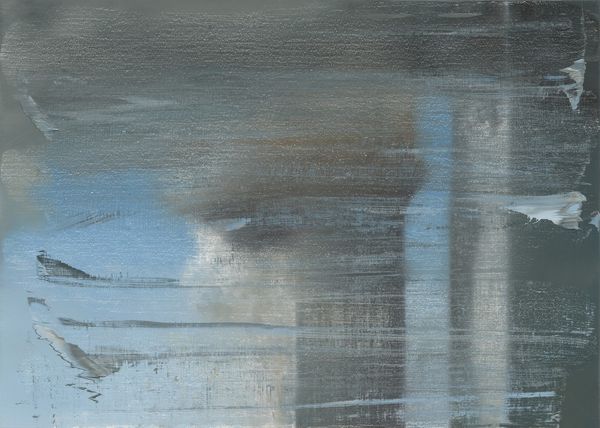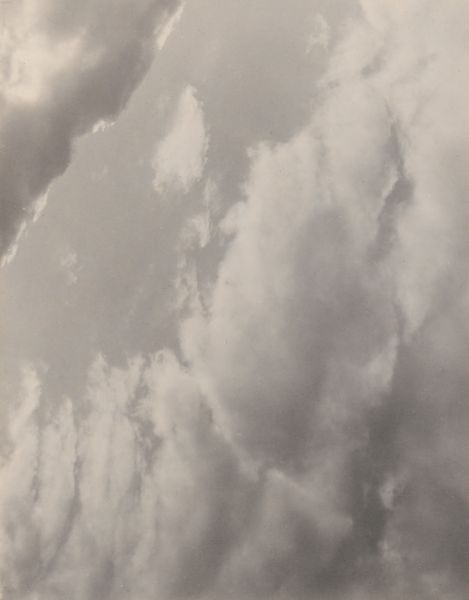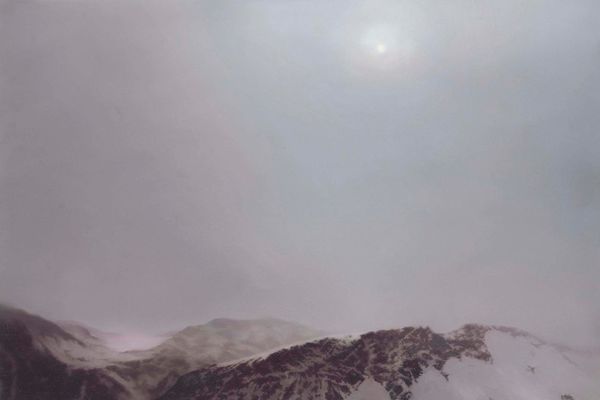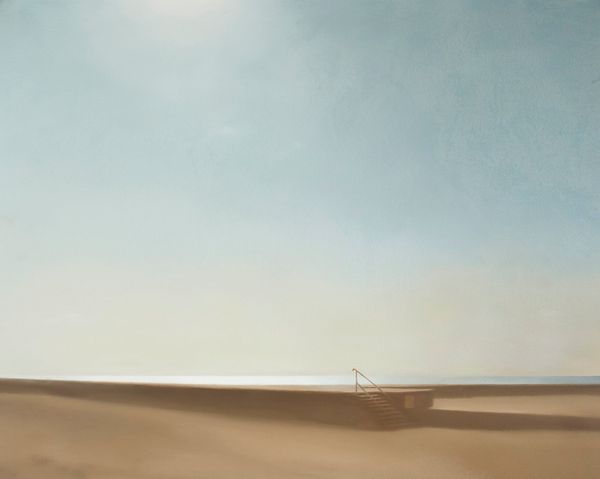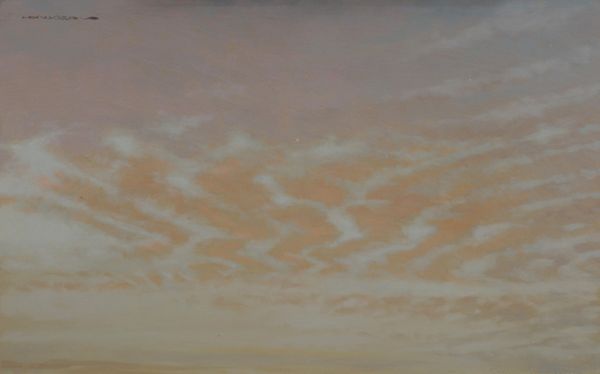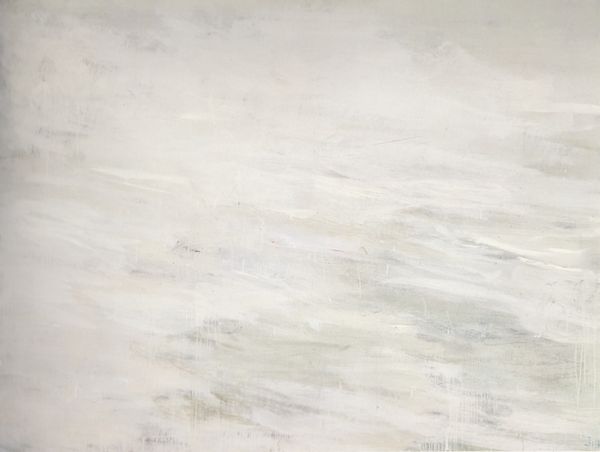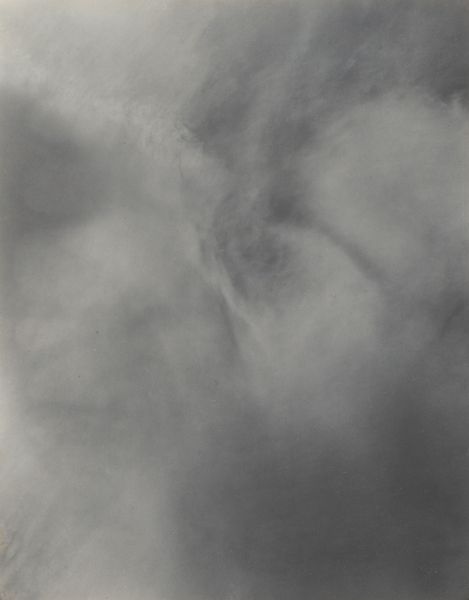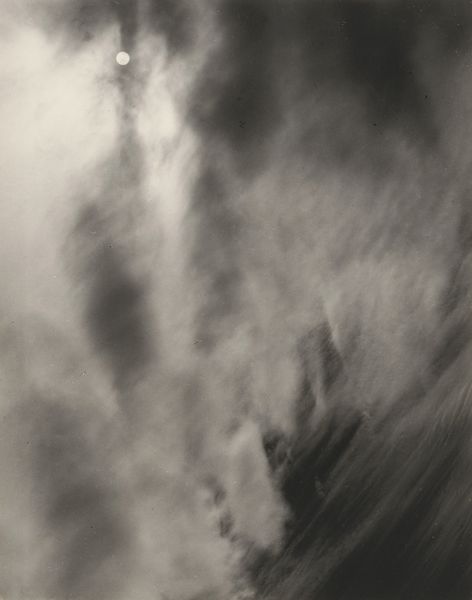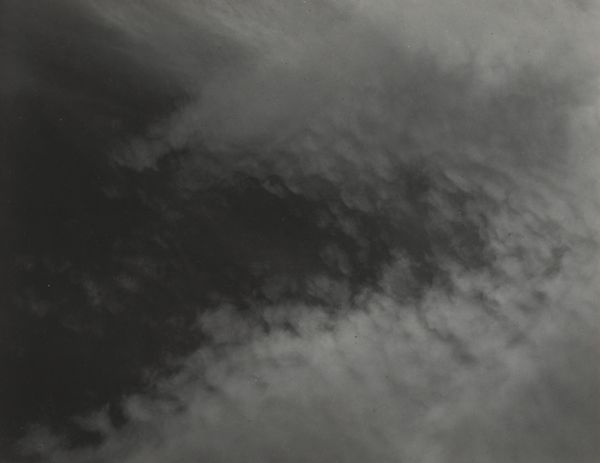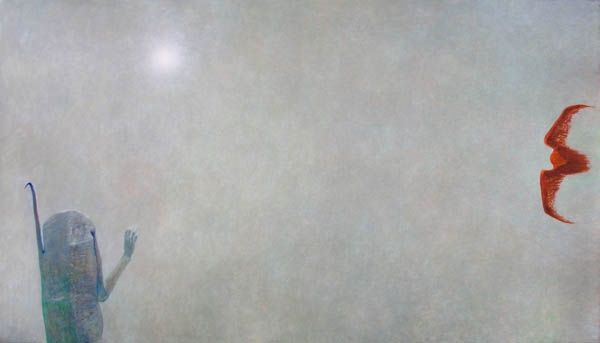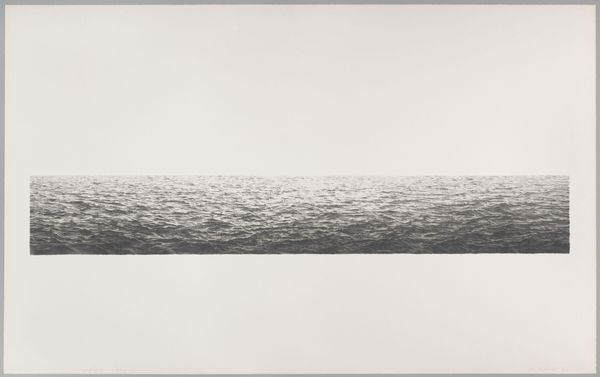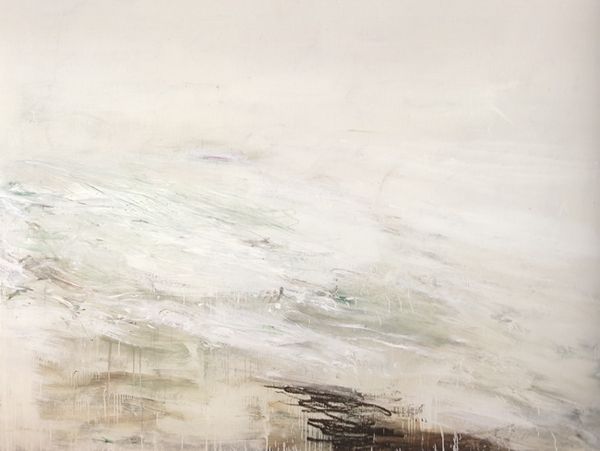![Seestück [Seascape] by Gerhard Richter](/_next/image?url=https%3A%2F%2Fd2w8kbdekdi1gv.cloudfront.net%2FeyJidWNrZXQiOiAiYXJ0ZXJhLWltYWdlcy1idWNrZXQiLCAia2V5IjogImFydHdvcmtzLzJlMzQ2MjU2LTU0ZDctNGU5ZC05YjRlLTYyYTkzYTUyMzlhNS8yZTM0NjI1Ni01NGQ3LTRlOWQtOWI0ZS02MmE5M2E1MjM5YTVfZnVsbC5qcGciLCAiZWRpdHMiOiB7InJlc2l6ZSI6IHsid2lkdGgiOiAxOTIwLCAiaGVpZ2h0IjogMTkyMCwgImZpdCI6ICJpbnNpZGUifX19&w=3840&q=75)
#
capitalist-realism
Copyright: Modern Artists: Artvee
Editor: So, here we have Gerhard Richter’s “Seestück [Seascape],” from 1975, made with oil paint. It evokes a sense of immense distance and, I think, profound tranquility. How do you interpret this work? Curator: What I find captivating is the tension between its apparent simplicity and the wealth of visual information encoded within. Consider how, across cultures, the sea is freighted with symbolism – of voyages, the unconscious, and the sublime. Do you think that applies here? Editor: I think so, but how does that connect with it being… blurry? Curator: Precisely. The blur is not merely an aesthetic choice. Blur as the obscuring of detail. The Romantics, like Caspar David Friedrich, understood nature's power to diminish the individual, but here, Richter gives us an image of nature altered. Richter uses blur to suggest the fading of memory and its unreliability. Think about how collective trauma echoes through generations. What does the absence of clear form evoke for you in that context? Editor: It’s like… the past is there, but we can’t quite grasp it fully. A collective fading, not just one person’s… Curator: Precisely. Now, note the almost monochrome palette – variations of grey and the palest blue. Colour often signifies specific emotions. By limiting it, what impact does this have on our experience of the painting? Editor: It creates a detachment… almost a clinical observation, rather than pure emotion. Curator: An interesting point. Richter gives us a landscape imbued with the complexities of remembrance, forcing us to consider what we choose to remember and, perhaps more importantly, what we unconsciously forget. Editor: So, it's not just a pretty seascape, but a meditation on history and memory. Thanks, I would not have seen that on my own!
Comments
No comments
Be the first to comment and join the conversation on the ultimate creative platform.
